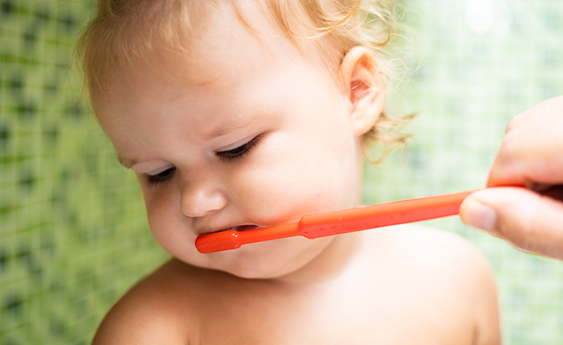TREND NEWS CENTER
When Should Child Begin Their First Orthodontic Treatment?
| For
the first orthodontics visit, 7-8-year-olds are appropriate
| Need to check skeletal growth and Yeongchugi development status
Between the ages of 6 and 7, children start losing their primary teeth and their permanent teeth begin to emerge. Many parents seek dental care because their child’s front teeth are misaligned or have gaps between them. This period is known as the "ugly duckling stage," where slight gaps between the front teeth or uneven tooth alignment are considered normal.
Professor Lee Mi-young from Gwanak Seoul National University Dental Hospital recommends, "The first orthodontic visit for children, unless there are any special issues, is best around the ages of 7 to 8. At this time, it’s advisable to have regular check-ups with an orthodontist to monitor skeletal growth and the development of permanent teeth."
Professor Lee added, "If the upper and lower jaws are not growing in balance or if the width of the upper jaw is narrow, it is better to start treatment early. Unlike adult orthodontics, which aim to align individual teeth, correcting the jaw that holds the teeth is effective for growing children."
Immediate treatment may also be necessary. A typical case is an "underbite," where the lower jaw protrudes further than the upper jaw, causing the lower teeth to overlap the upper teeth in reverse. Underbites are usually treated around ages 7 to 8 when permanent teeth are emerging, but if severe, treatment can begin during the primary dentition phase before the first permanent teeth appear.
Professor Lee explained, "During the primary dentition phase, the growth of the upper jaw is important. An underbite can hinder the growth of the upper jaw, so treatments often focus on promoting upper jaw growth."
A common treatment method for an underbite is the face mask. This involves wearing a fixed oral appliance connected to a face mask with rubber bands. The treatment period typically lasts from 6 months to a year, with the recommended daily wear time being 12 to 14 hours, preferably during home hours.
Conversely, there is "mandibular retrusion," also known as a "weak chin," where the lower jaw does not grow adequately compared to the upper jaw. This can lead to a deep overbite, where the upper teeth cover the lower teeth excessively, or even TMJ disorders. The treatment for mandibular retrusion involves orthognathic treatment to inhibit upper jaw growth and promote lower jaw growth.
Often, a narrow upper jaw may go unnoticed because it is not visible externally. When the widths of the upper and lower jaws are not in harmony, it can cause unstable occlusion and, in severe cases, asymmetry. However, growing children have sutures in the upper jaw that are not yet fully ossified, allowing for expansion with relatively minimal force, thus achieving stable occlusion and creating additional space through treatment.
Professor
Lee also emphasized, "Skeletal structures and dental arrangements vary
greatly among individuals, and similar-looking malocclusions can have very
different characteristics. Therefore, it is important to get an accurate
diagnosis and opinion from an orthodontist."
